A lush and vibrant home garden is a beautiful thing.
Filling your outdoor space with an abundance of plants not only looks amazing, but also purifies the air, attracts pollinators, lowers stress, and adds natural beauty to your home.
When planning your home garden, it’s important to think carefully about the layout, size, soil, sunlight, and types of plants you’d like to include.
A well thought out design will help your garden thrive with minimal maintenance.
Let’s dive into the details on how to make each of these 13 home garden ideas a reality!
✨Click to Get My 101 FREE Designer Room Ideas
Create an Edible Garden

One of the most rewarding home garden ideas is to plant an edible garden filled with fruits, vegetables, and herbs.
Not only will you have access to ultra-fresh produce, but tending to an edible garden is a great way to get some exercise and fresh air.
When designing an edible garden, make sure to situate it in a sunny spot and prepare the soil by mixing in compost or manure.
Plant crops that thrive in your climate and choose a mix of quick growing leafy greens along with plants that produce throughout the season, like tomatoes, peppers, eggplant, squash, and berries.
To maximize your harvest, use vertical gardening techniques like trellises, cages, and poles to support climbing plants like beans, cucumbers, peas, and tomatoes.
This saves space and improves air circulation to prevent disease.
For easy access, keep your most frequently harvested crops nearest to your backdoor.
And don’t forget the herbs!
Plant classics like basil, cilantro, rosemary, sage, thyme, oregano, parsley, chives, and mint to flavor your cooking.
Maintaining an edible garden does require consistent watering, weeding, pruning, and pest management.
But the hands-on work is extremely fulfilling.
The simple pleasure of walking out your door to snipping for salads or ingredients for a home cooked meal makes the effort well worth it!
Craft a Zen Garden Retreat
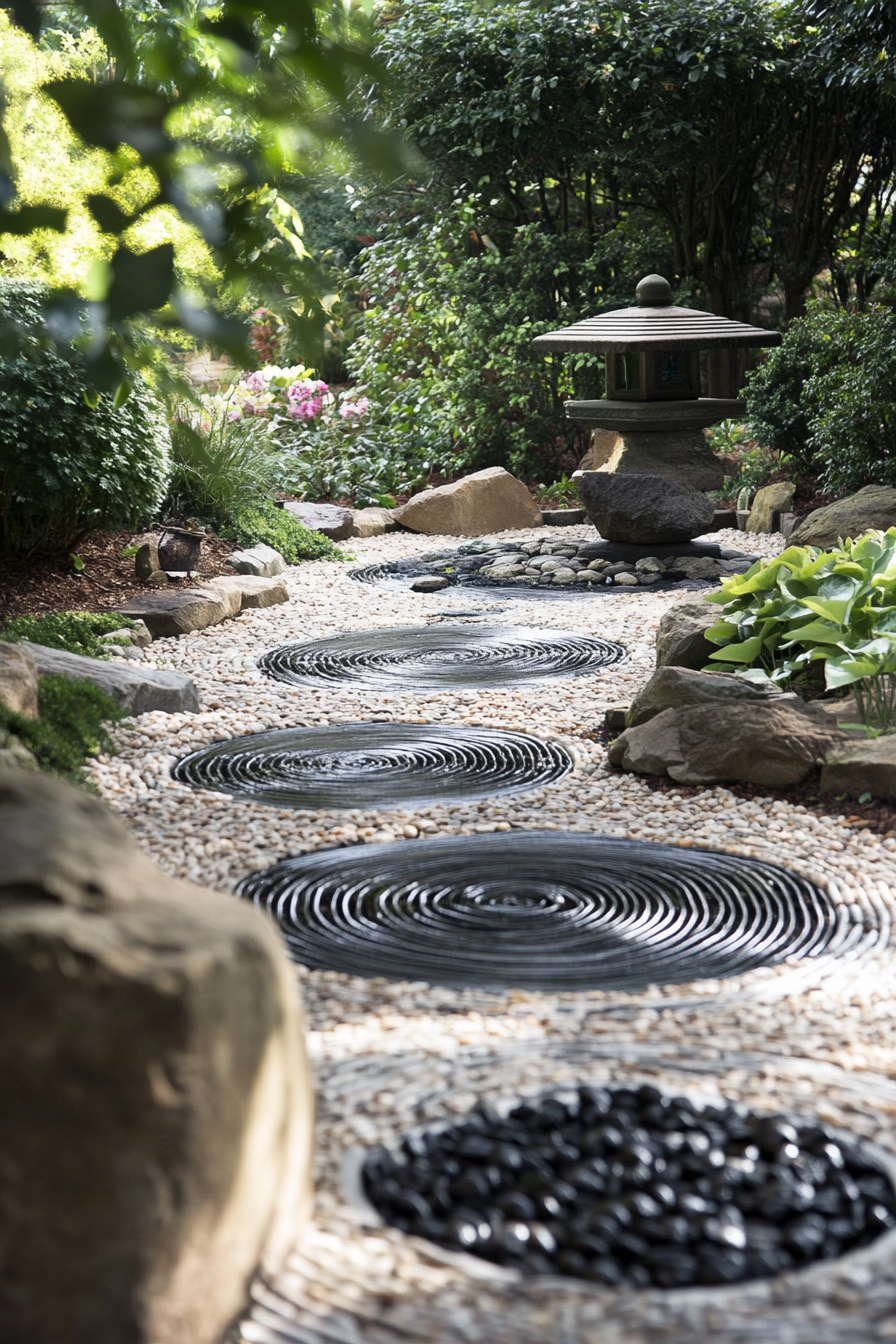
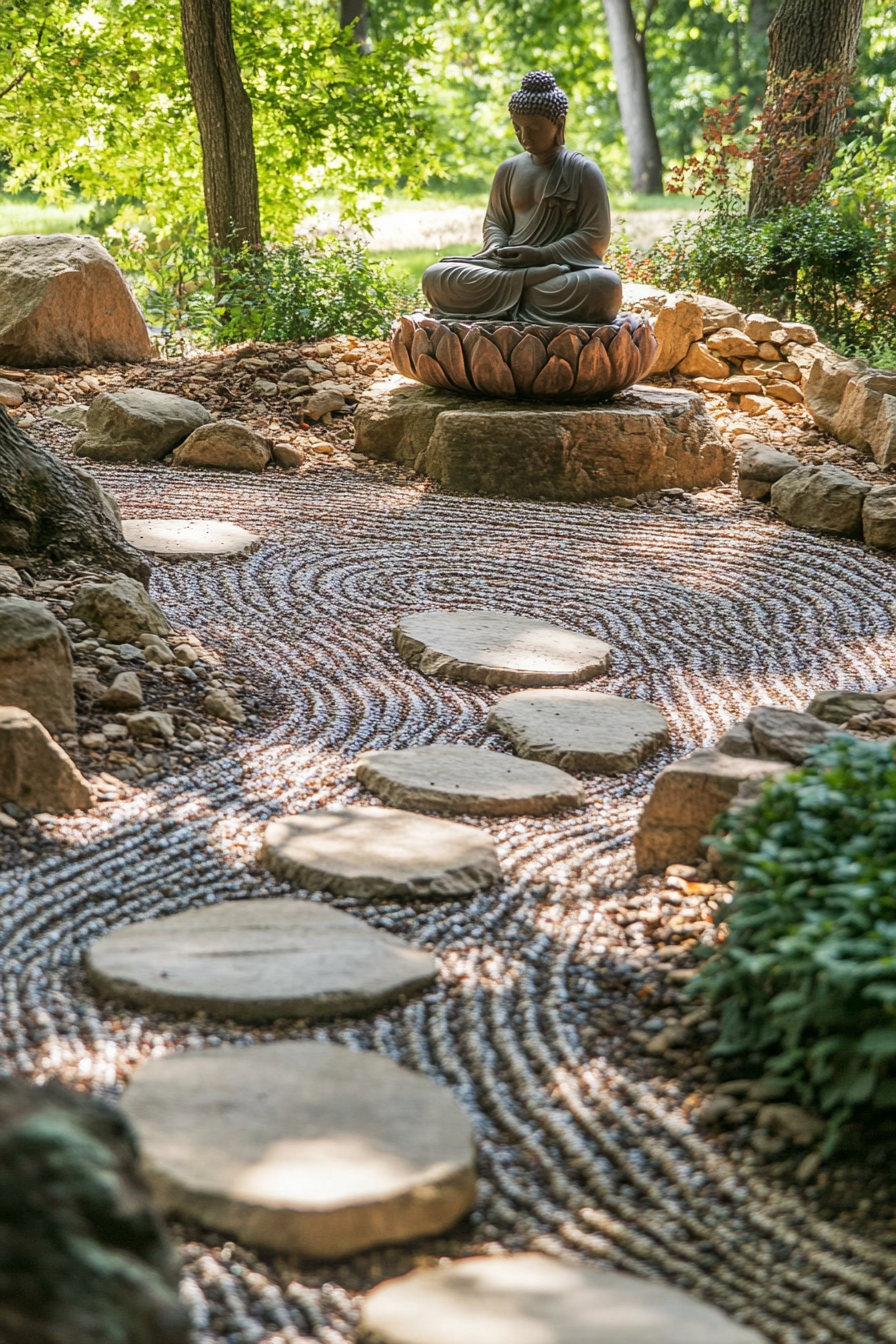
A peaceful and tranquil Zen garden is perfect for relaxing, meditating, and simply spending time in nature.
Japanese Zen gardens are carefully curated to promote calmness through minimalism, neat arrangements, symbolic elements, and a harmonious blend of nature and sculpture.
While elaborate Japanese rock gardens take skill to construct, you can easily design a simple Zen garden retreat right in your own yard.
Choose a level spot and delineate the space with a smooth stone border.
Rake the area within the border until the soil or sand is completely smooth and flat.
Place decorative rocks, gravel, or flagstone pavers to create minimalist patterns and textures.
The possibilities are endless – for example, craft swirling patterns in the sand around scattered stones.
Or place a ring of rocks around a neatly raked patch of moss.
Add symbolic Zen elements like lanterns, bamboo, bonsai trees, wooden benches, and water features.
For instance, position large flat stones in a dry creek bed and add a fountain or pool to represent water.
Focus on natural materials and minimal, clean lines to create a serene ambiance.
Getting creative with raking, patterns, textures, and simplicity is key for your Zen retreat.
Spend time sitting in this special corner while practicing mindfulness or enjoying the simple beauty of nature.
Your Zen garden will quickly become your own personal sanctuary.
Add Mass with Shrubs and Bushes

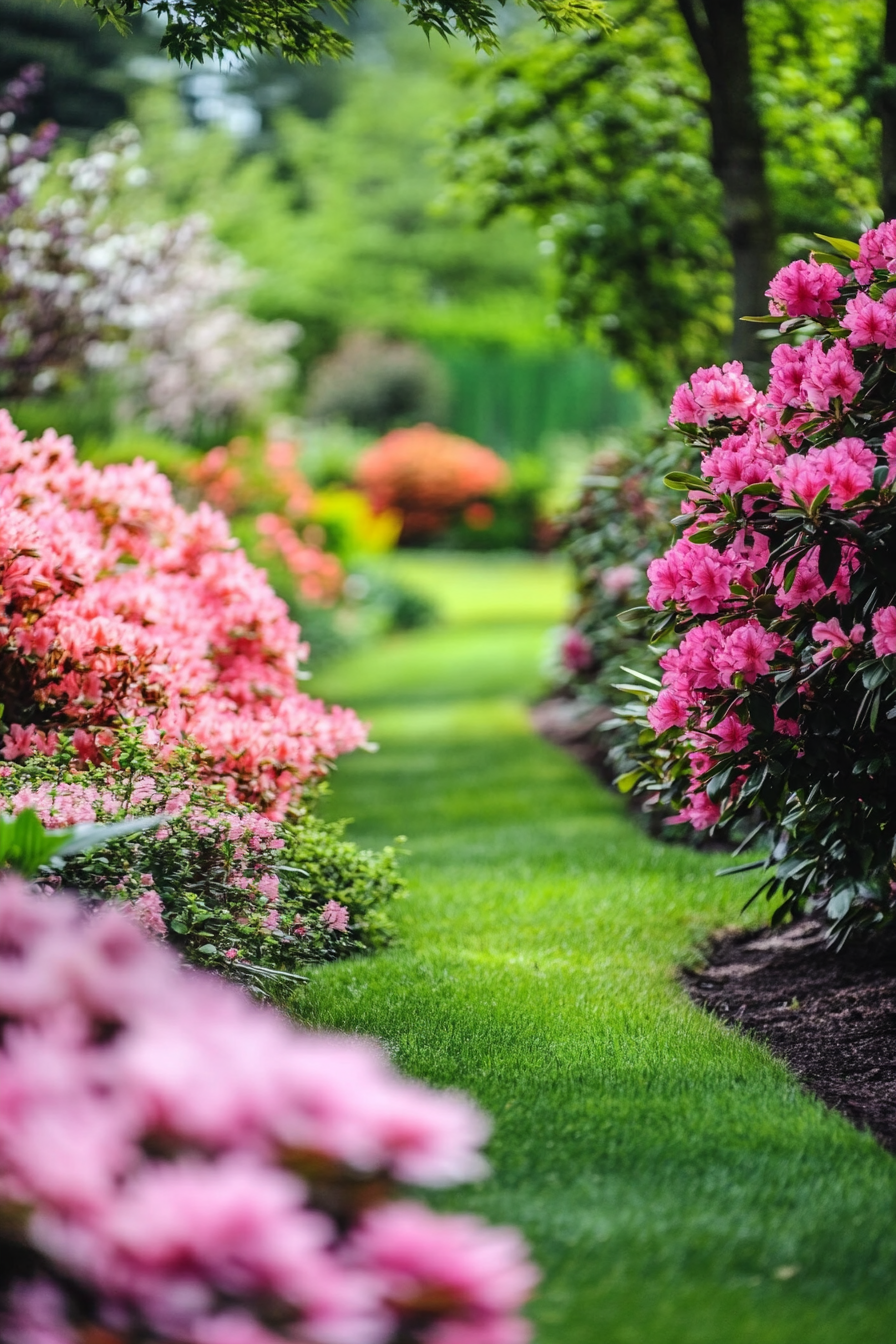
Planting a variety of shrubs and bushes is a great way to quickly add structure, mass, and maturity to your garden.
Shrubs come in all shapes, sizes, colors, and textures – so do some research to select varieties that will thrive in your specific conditions.
Evergreen shrubs like juniper, boxwood, and yew keep their leaves year-round, providing permanent structure.
Flowering shrubs like hydrangeas, lilacs, and forsythia provide gorgeous blooms in spring and summer.
Plant bushy specimens like spirea, potentilla, and viburnum for lush, full shapes.
Place larger shrubs towards the back of garden beds and graduated smaller sizes in front to create layered dimension.
Use low-growing shrubs under windows and taller varieties against walls or property boundaries for screening.
Leave enough space between shrubs for each variety to reach their mature size.
Keep them looking full and lush with regular pruning.
Feed with compost and mulch around the base.
Over time, your thoughtfully placed shrubs will grow to fill out your garden with vibrant, mature shapes.
Illuminate with Garden Lighting
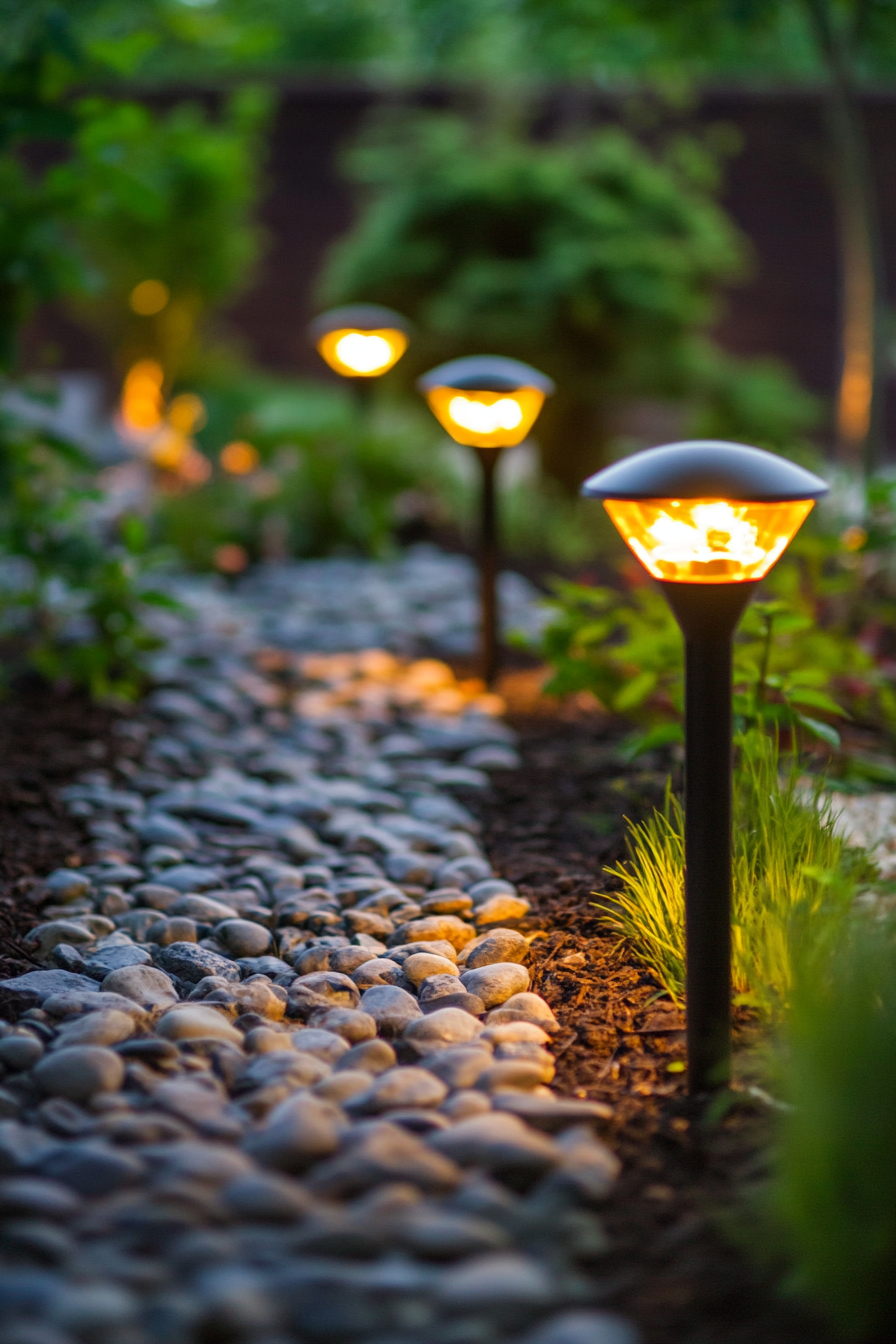
Outdoor lighting takes your garden to the next level by allowing you to enjoy the space long after the sun goes down.
Spotlights, lanterns, string lights, and solar stakes are just some of the lighting options that will bring your beds and walkways to life at night.
Up-lighting from fixtures placed in the ground along borders and against walls creates dramatic shadows and highlights architectural and textural details.
Bright washes of light show off colorful annuals and perennials in mixed beds.
Path lighting is essential for navigating garden walks on evening strolls and when entertaining outdoors.
Line walkways with low-voltage lights or use solar powered stakes.
Highlight steps and change in level with spotlight fixtures.
Another fantastic way to illuminate your garden is by hanging Edison string lights above seating areas, in trees, over pathways, and strung between trellises or other structures.
The warm glow creates a magical ambiance for outdoor dinners or soirees.
Make sure to use energy efficient LED bulbs and fixtures with solar power or timers.
This makes garden lighting affordable to run while avoiding light pollution.
The right lighting takes your garden’s curb appeal and enjoyment to the next level after dark.
✨Click to Get My 101 FREE Designer Room Ideas
Craft Garden Rooms and Seating Areas
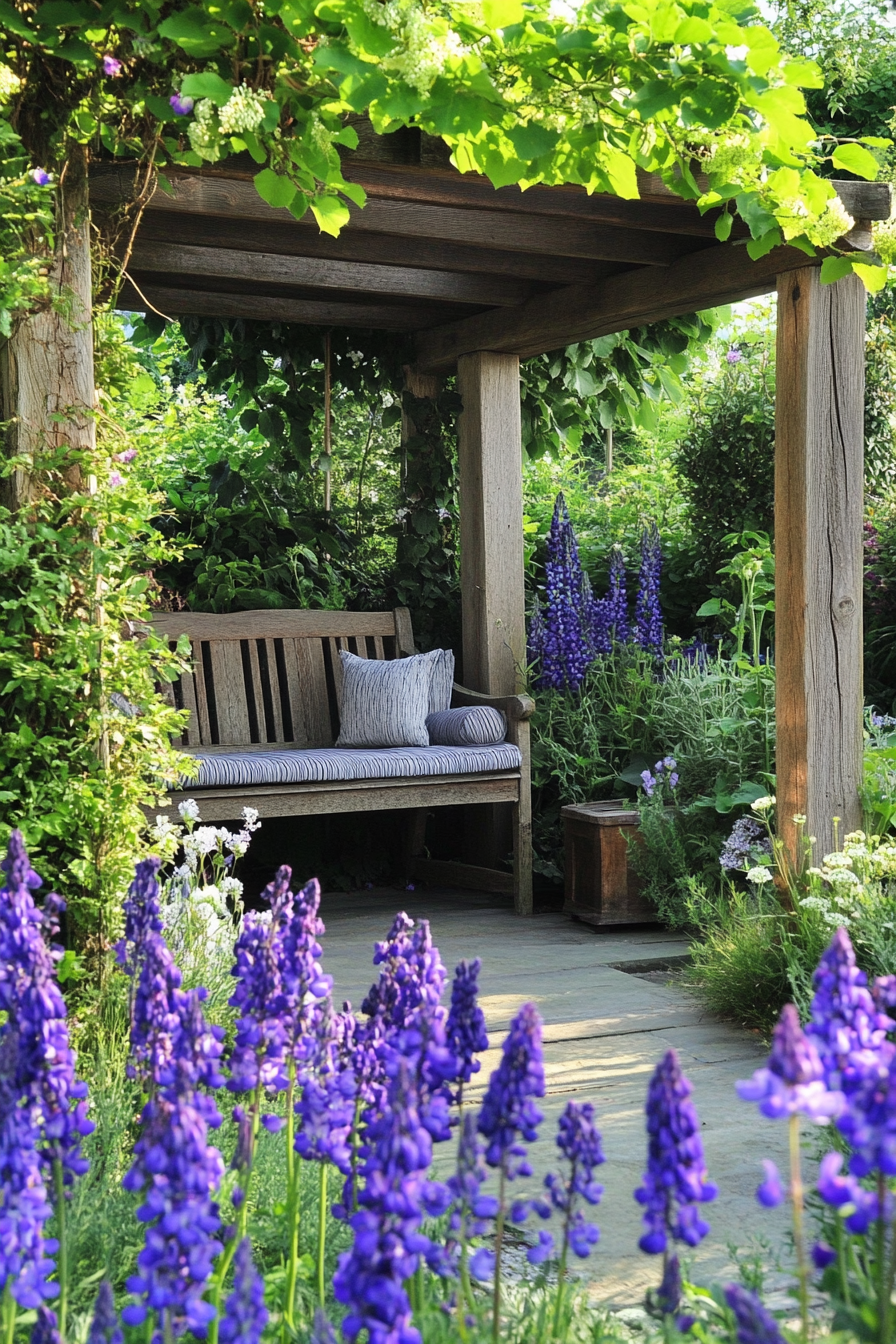
One of the best ways to create an inviting garden is by designing a series of “outdoor rooms” and seating areas to enjoy.
Use structures like trellises, pergolas, and gazebos combined with plantings, borders, and flooring to define each garden space.
For example, build a pergola next to your home’s deck or patio, extending your living area outdoors under a shaded canopy.
Or use a trellis to divide a corner of your yard into a cozy sitting area or dining nook.
Strategically placed plants and borders connect and separate the spaces.
Outfit each area with seating like benches, patio furniture, hammocks, swings, and even lounge beds.
Add creature comforts like side tables, fire pits or chimeneas, and storage cabinets or shelves to create unique hangouts.
Finish the spaces with area rugs, cushions, throws, and decorative outdoor lighting
You can now relax in each “room” of your garden – socializing, eating, reading, napping, or simply enjoying the outdoors in style and comfort.
Add Height with Climbing Plants
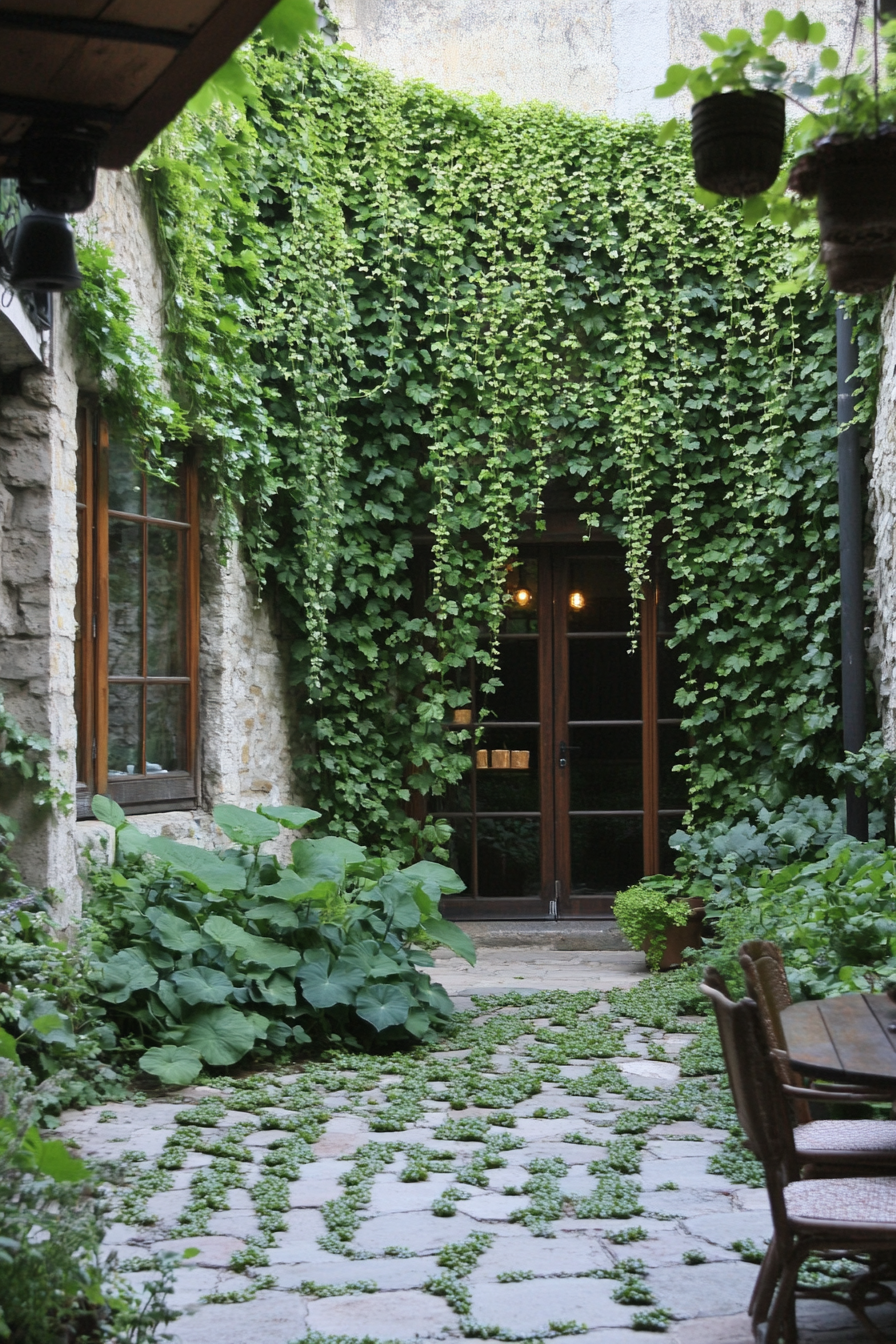
When thoughtfully incorporated, vertical climbing plants add height, drama, and an abundance of greenery to your garden.
Provide physical support for climbers using structures like trellises, obelisks, pergolas, fences, or walls.
Position these vertical elements throughout your garden to train plants upwards instead of outwards.
This saves valuable yard space while creating beautiful vertical accents.
Some climbers like ivy and Virginia creeper naturally attach themselves via holdfasts or adhesive pads.
Others like passionflower and hydrangea petiolaris need to be loosely tied to supports until their tendrils or aerial rootlets take hold.
Place faster growing annual vines like morning glory, moonflower, and hyacinth bean on lower sections while slower growing perennials like wisteria and trumpet vine go on higher supports.
Soon you’ll reap the rewards of abundant flowers and greenery in new vertical dimensions!
Add a Water Feature
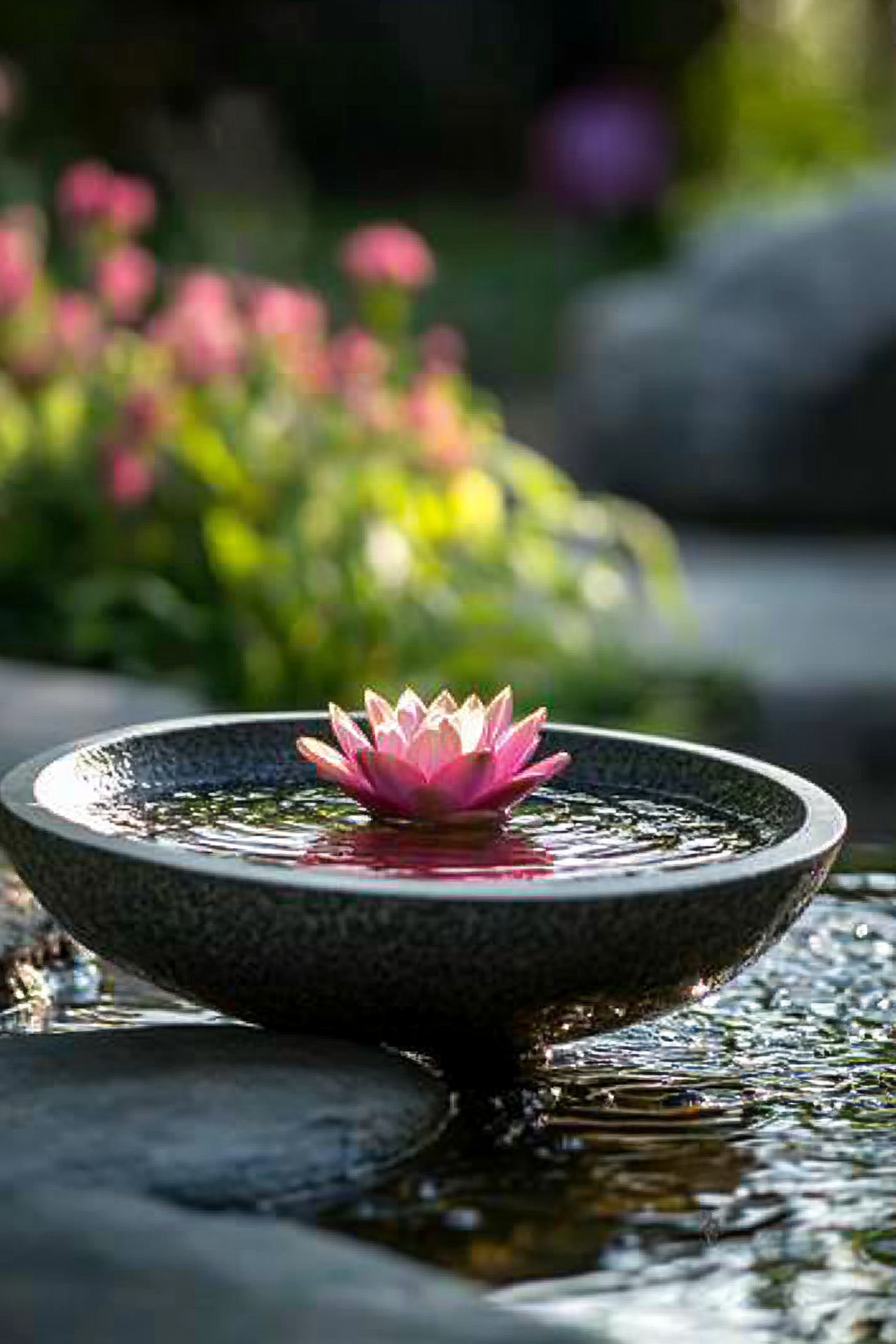
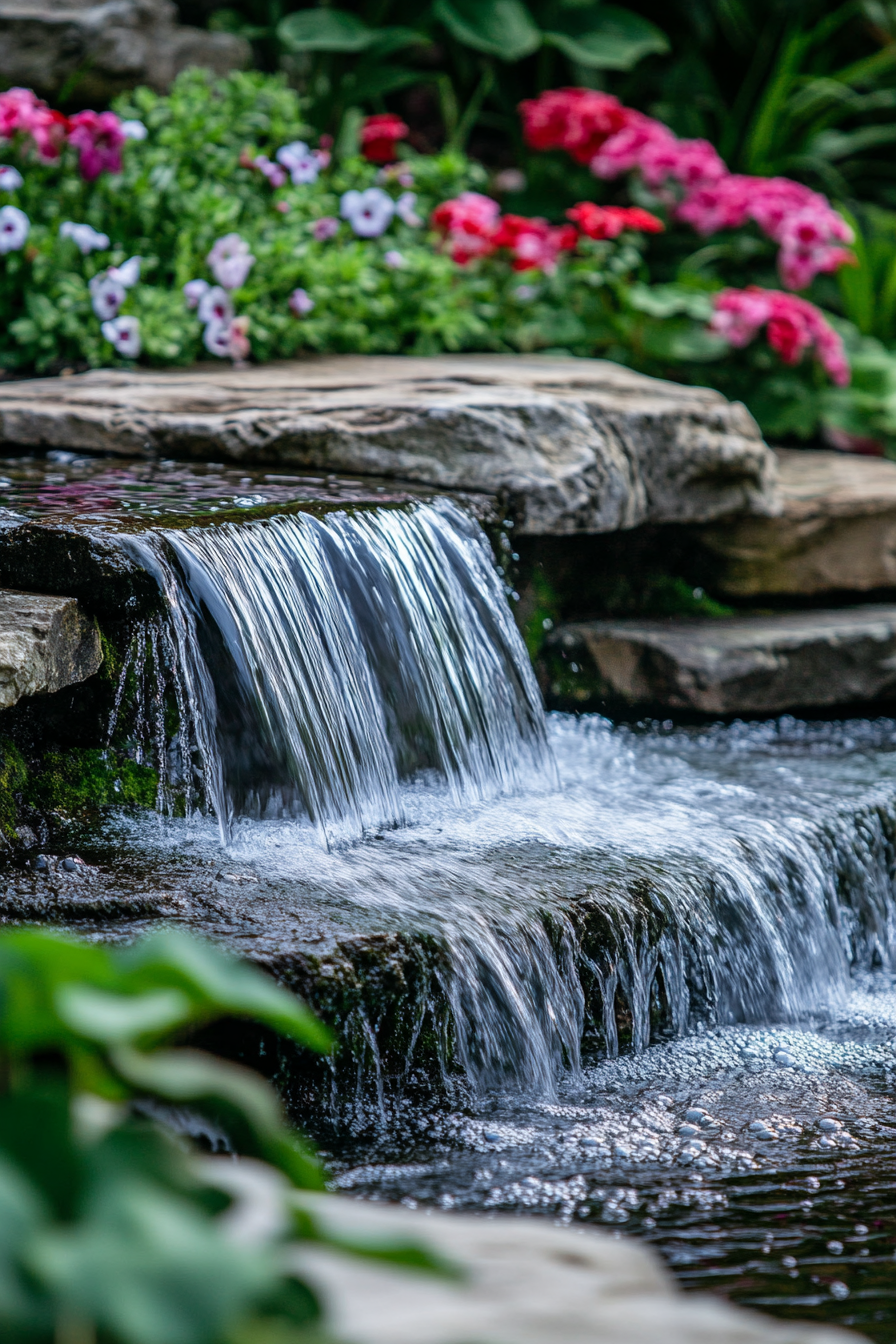
The sight and sound of moving water never fails to instantly relax and rejuvenate.
There are endless options for water features ranging from dramatic tiered fountains to simple birdbath ponds.
Consider your needs in terms of scale, budget, and maintenance when selecting a water feature.
Larger ponds with aquatic plants provide complete ecosystems attractive to local wildlife.
But small fountains and stone basins require less installation work and upkeep.
Water features look fantastic set into garden beds and lawns or positioned against backdrops like walls and fences.
The white noise masks traffic sounds and other distractions, promoting calmness and tranquility.
The reflective surface adds interest and light.
Make sure your water feature recirculates water and has accessible filtration so you can easily maintain sanitation and clarity.
A stunning water feature takes your garden to the next level by providing a focal point and sensory element that immediately relaxes both body and mind.
Plant a Pollinator Garden
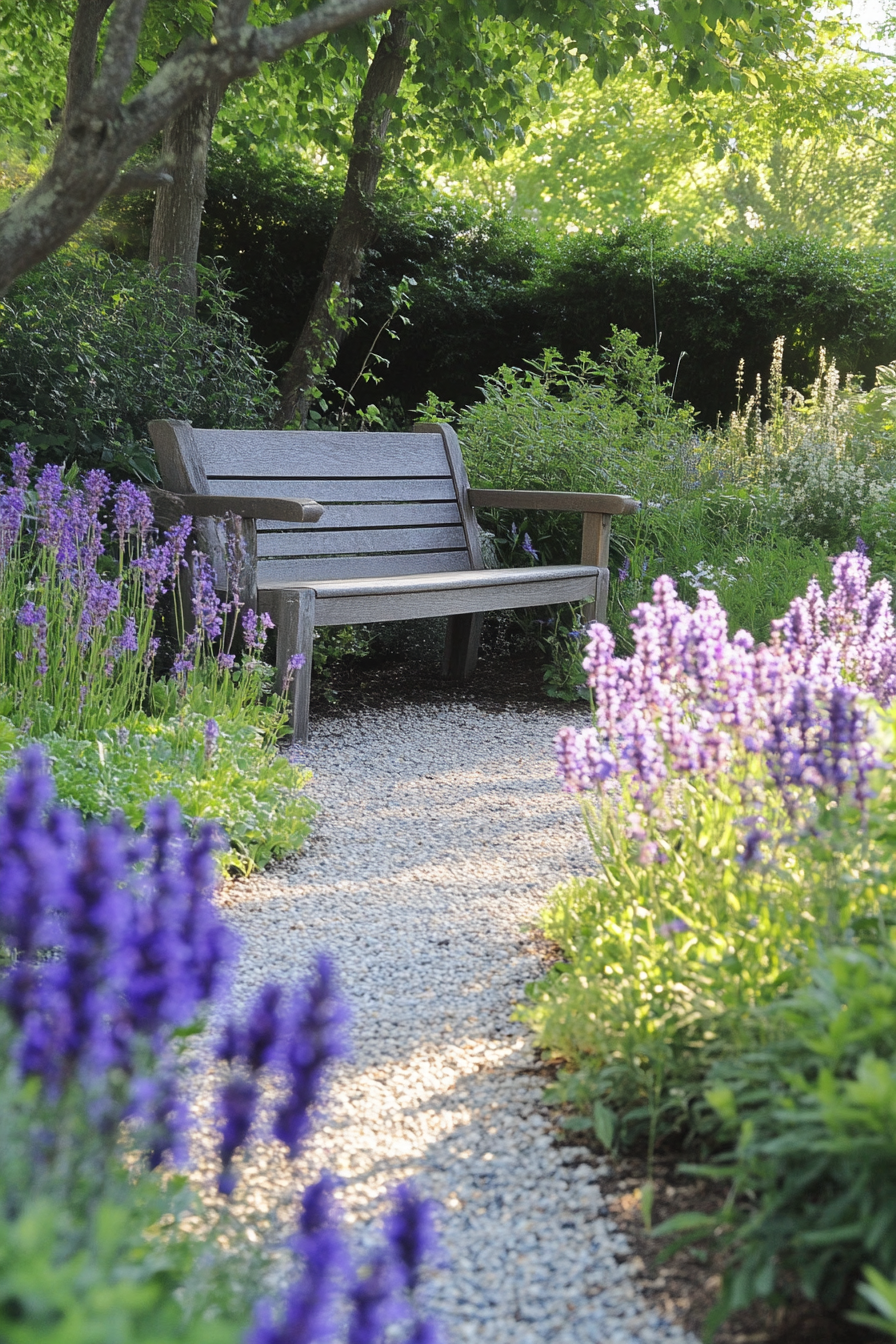
By planting a garden designed to attract and nourish butterflies, bees, hummingbirds, and other pollinators, you’ll reap the rewards of your efforts through vibrant activity and increased yields.
Seek out native plants with succession blooms in a variety of colors, heights, and shapes.
For example, coneflowers, lupines, asters, and milkweed attract local pollinators.
Herbs like lavender, thyme, basil, and oregano entice insects while being useful to gardeners.
Provide food sources too.
Butterfly bushes, bee balm, and verbena give nectar.
Trees like dogwood and fruit varieties provide ample pollen.
Shallow dishes filled with wet sand give butterflies water while they feed.
And be sure to avoid pesticides!
You’ll be amazed at how quickly your pollinator-friendly garden comes to life with the sights and sounds of countless beneficial wildlife visitors busily doing their jobs.
Watching the intricate activity and biodiversity will quickly make a pollinator garden one of your favorite spots to relax.
✨Click to Get My 101 FREE Designer Room Ideas
Grow a Cottage Garden
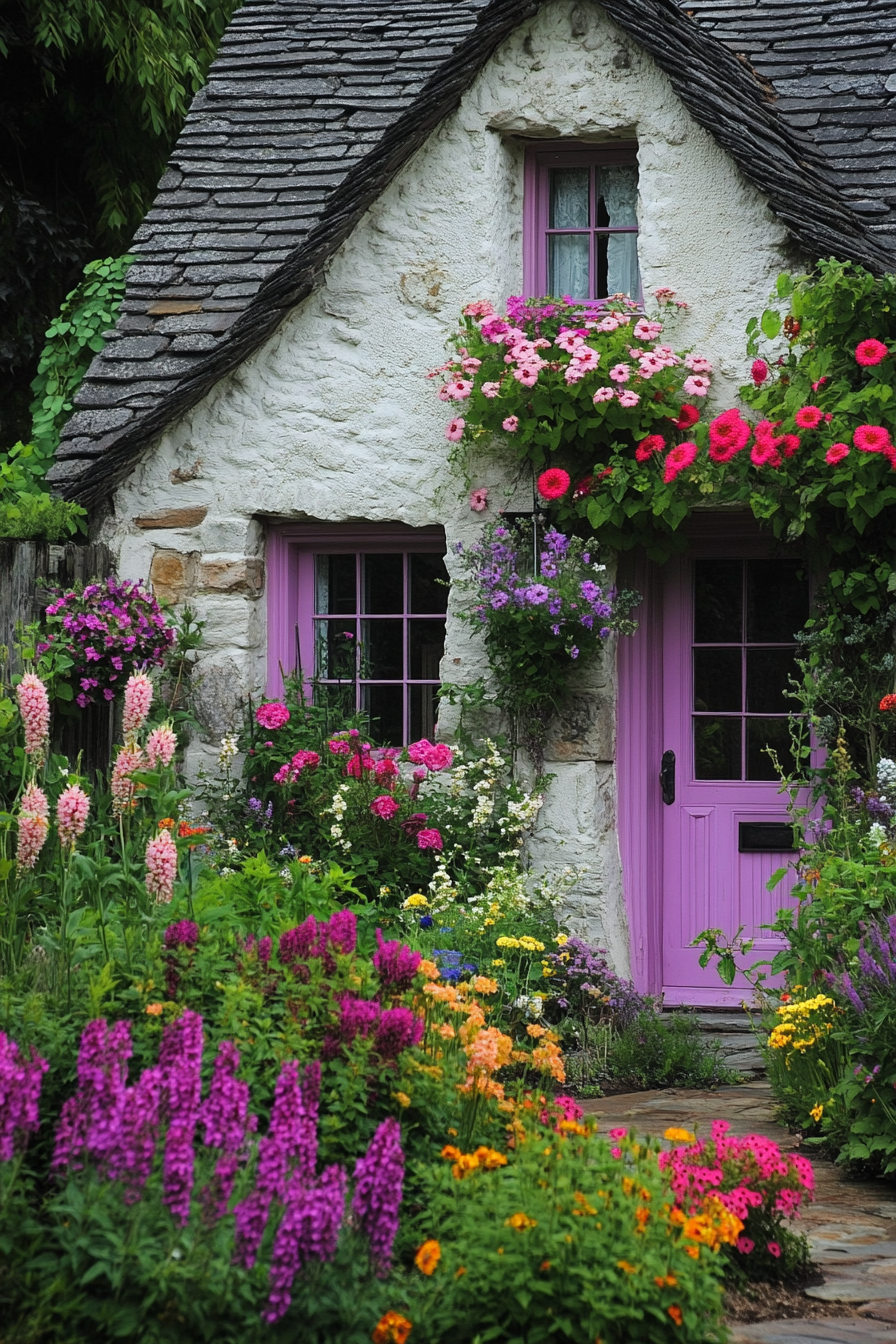
Charming, colorful, and romantic cottage gardens are one of the most appealing garden styles you can create.
The informal design harkens back to English gardens overflowing with blossoms inside quaint cottages.
Cottage gardens have an informal and relaxed vibe.
Plant a mixture of ornamental and edible flowers, herbs, and vegetables densely to create fullness and texture.
Foxglove, hollyhocks, peonies, poppies, roses, larkspur, and cosmos make classic additions.
Wandering gravel paths curve through the bounty of blooms.
Add arbors, trellises, seating, and decor touches like painted pots, birdhouses, and artwork.
The overall effect should feel welcoming, lush, and abundantly pretty.
Unlike precisely manicured gardens, cottage gardens have a joyful, overflowing abundance.
Nature is allowed to freely self-sow and intermingle.
As blooms fade, simply amend the soil, add compost, and allow new layers of loveliness to emerge and flourish.
Plant a Wildlife Garden
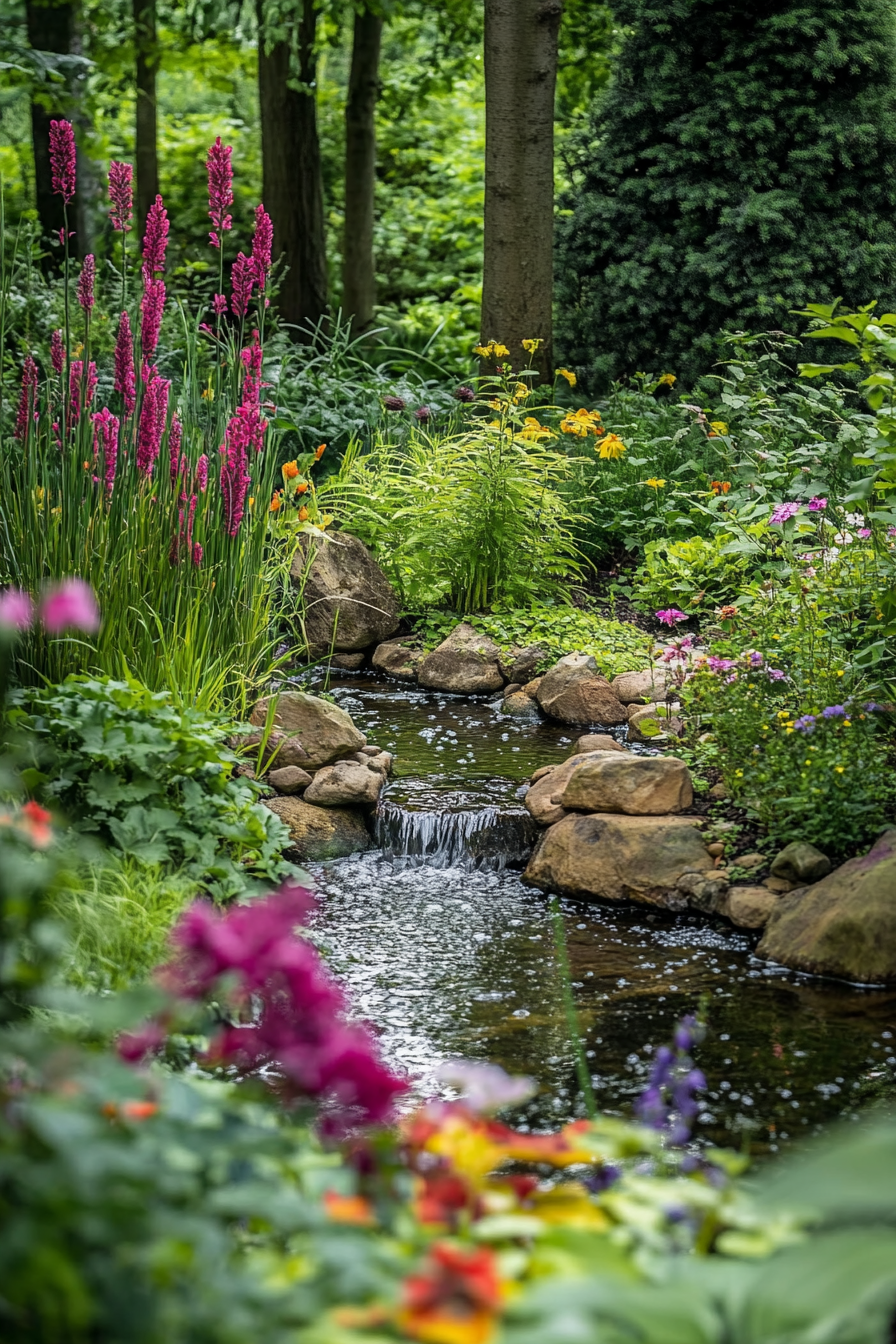
By filling your garden with food, water, shelter, and nesting spots for local wildlife, you can create a nature sanctuary right in your own yard that benefits both animals and humans.
Plant native trees, shrubs, and flowers that provide tasty seeds, nuts, nectar, fruits, and berries.
Species like elderberry, serviceberry, currants, clover, and wildflowers generously give back to wildlife.
Leave sections of leaf litter, dead logs, and unmowed grasses which provide shelter and nesting material.
Install nesting boxes and bee hotels inviting birds, bats, and pollinators to take up residence.
Add a water source like a pond, fountain, or bird bath for drinking and bathing.
Strategically placed rock piles, evergreen shrubs, and brush piles also create shelter.
At night, minimize lighting and noise pollution.
Your efforts will quickly attract local birds, butterflies, toads, beneficial insects, and small mammals to this nature-focused habitat.
Listening to birdsong and watching wildlife happily flourish in your garden is a simple pleasure that soothes the soul.
Plant a Rain Garden
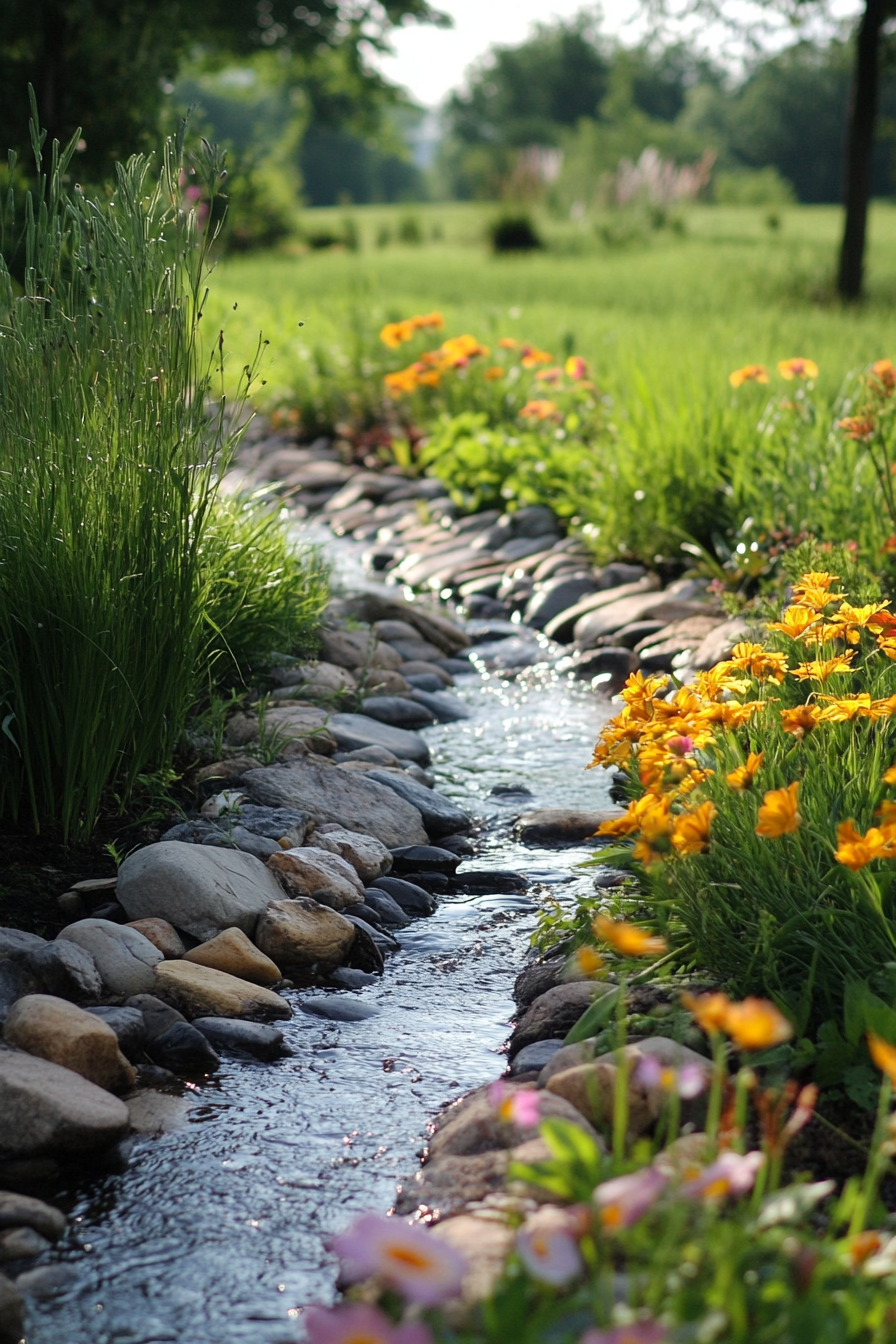
Rain gardens are shallow planted basins that soak up rainwater runoff from roofs, driveways, and patios.
By capturing water, they help reduce erosion and flooding while also filtering pollutants.
Choose a low-lying spot at least 10 feet from your home’s foundation to build your rain garden.
Dig a shallow basin and fill it with a soil mix that drains easily.
Top with mulch and river rock around the edges.
Plant native water-loving species like wildflowers, sedges, rushes, and grasses that can handle both wet and dry spells.
Their deep roots will help soak up the moisture and filters the water as it replenishes groundwater.
Your rain garden will now put excess stormwater to good use!
Make sure to weed and thin plants as your rain garden establishes.
The benefits for your yard and the greater environment will be well worth the initial work of installing this eco-friendly feature.
Add Container Gardens
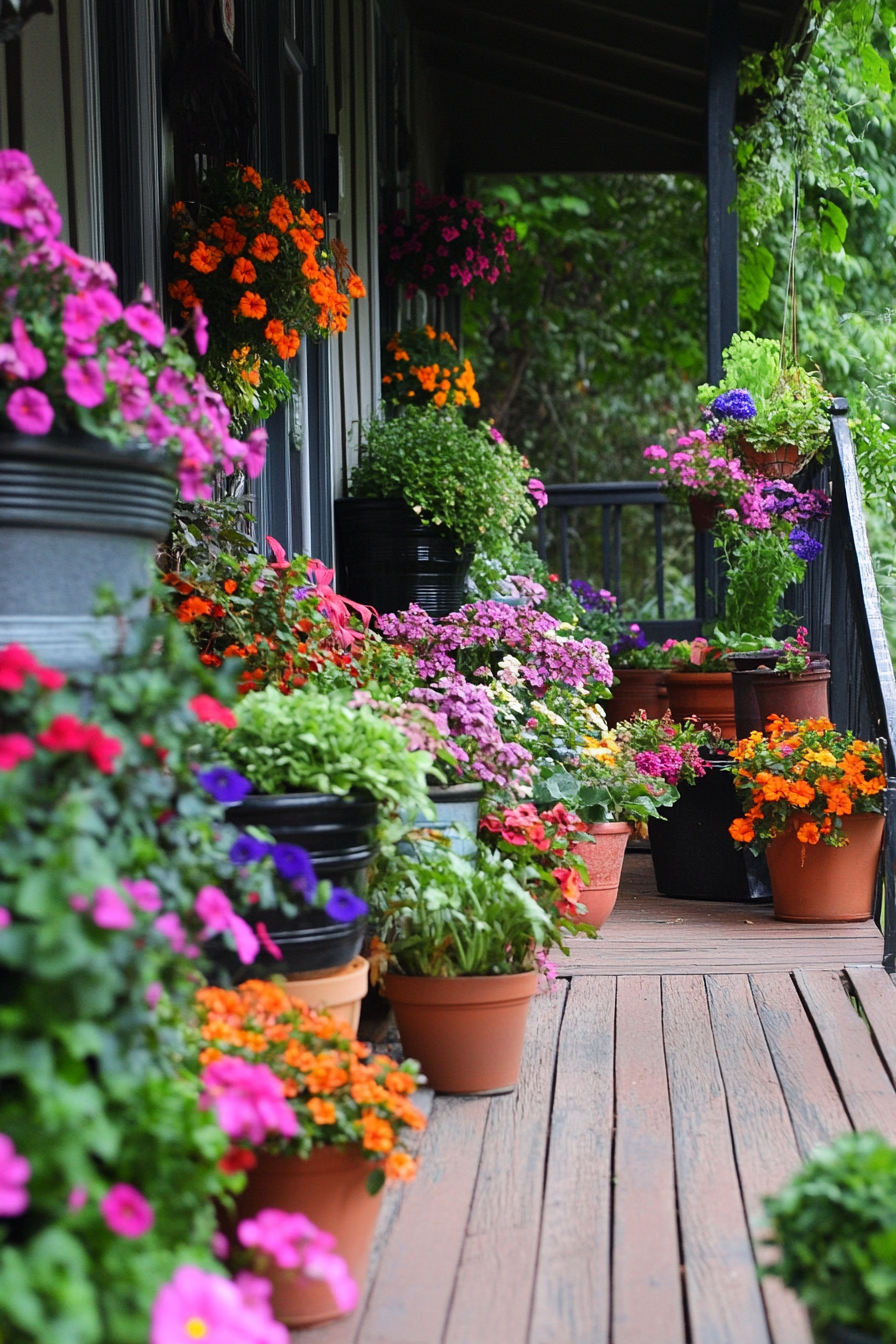
Not much space?
No problem!
You can still indulge your green thumb by planting gorgeous container gardens on patios, balconies, entryways, and even front steps.
Select a mix of pots and planters in different materials, sizes, shapes, and colors.
Fill them with well-draining potting mix, leaving several inches at the top.
Then comes the fun part – picking your plants!
For fullness, plant “thrillers” (tall vertical plants), “fillers” (mid-size bushy plants), and “spillers” (cascading trailers).
Some great options include ornamental grasses, ornamental kale, succulents, trailing ivy, petunias, and compact shrubs.
Arrange your containers artfully, keeping proper spacing and positioning in mind.
Combine pots of all one color or a bold mix – your creativity rules here!
Switch out plantings each season for a fresh look.
Container gardening satisfies the urge to grow even in tight spaces.
And the ability to control soil, drainage, light, plant choice, and mobility makes it a very rewarding form of gardening.
Your pots will soon be overflowing with blossoms!
✨Click to Get My 101 FREE Designer Room Ideas
Plant a Vertical Wall Garden
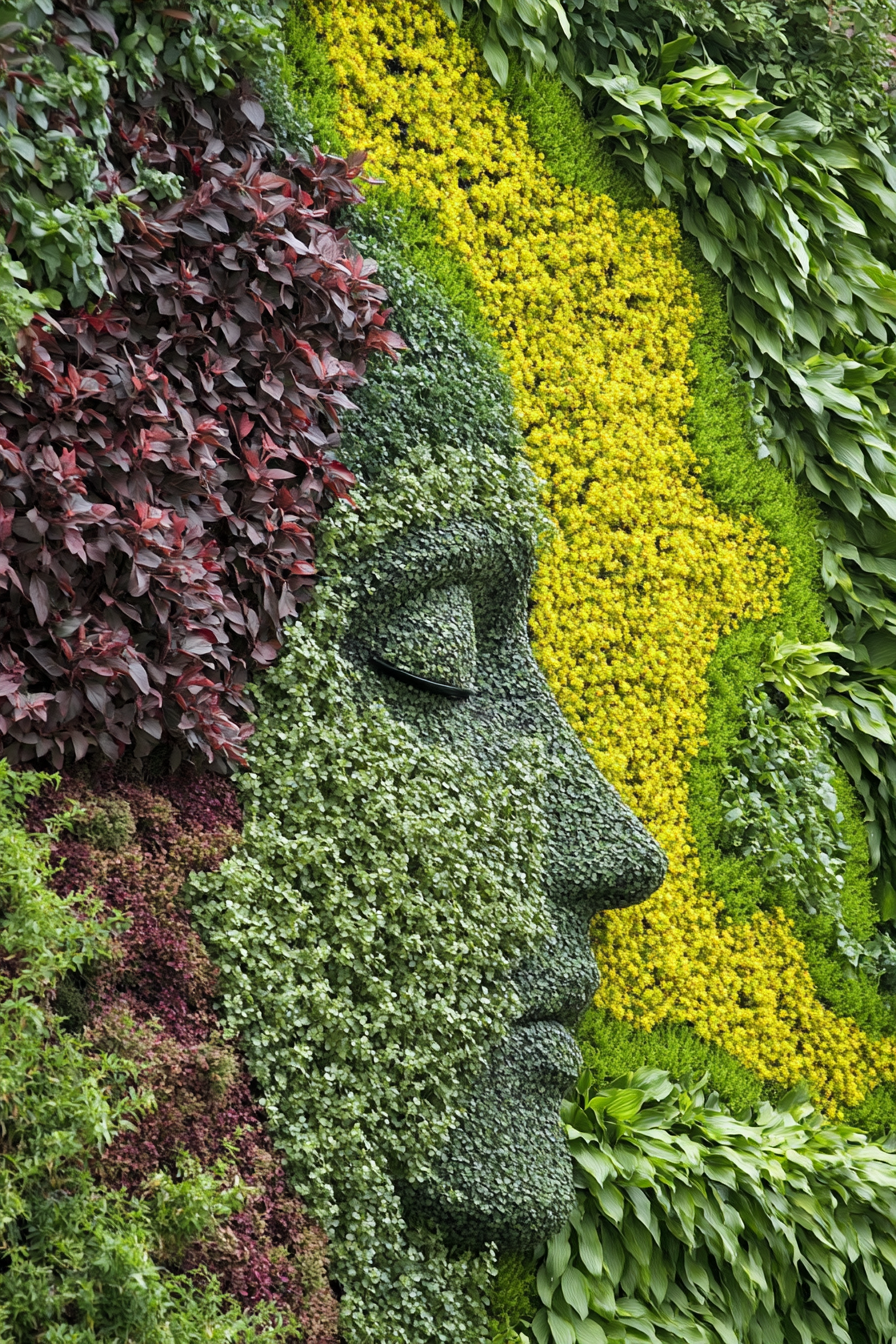

Running out of ground space doesn’t mean you can’t keep growing.
Take your garden up on vertical walls, fences, and trellises with trailing plants, espalier fruit trees, wall planter boxes, and vertical gardening structures.
Custom vertical garden systems with stacked raised beds make perfect use of upright spaces.
Or get creative repurposing wooden pallets, mesh panels, ladders, hanging buckets, and stacked pots as vertical gardens.
Good plant choices include trailing succulents, ivy, ferns, ornamental grasses, espalier fruit trees, strawberries, dwarf fruit bushes, and cascading flowers.
Their beautiful trailing shapes will flourish on walls and fences.
Vertical gardens are also extremely handy for growing kitchen herbs and spices within arm’s reach.
Your vertical surfaces will soon become lush and productive gardens!
Use these garden design tips as a jumping off point and get creative making the space your own.
The hands-on cultivation process and ability to shape a natural space is extremely rewarding.
Don’t be afraid to experiment and switch things up over time until you find the layout and plantings that you truly love spending time immersed in.
Soon your garden will be a beautiful, lively extension of your living space.
The tranquility, sensory details, and connection with nature it provides will make all the planning and hard work well worth it the minute you step outside.
So embrace your inner landscaper and start crafting your ideal lush garden oasis!

